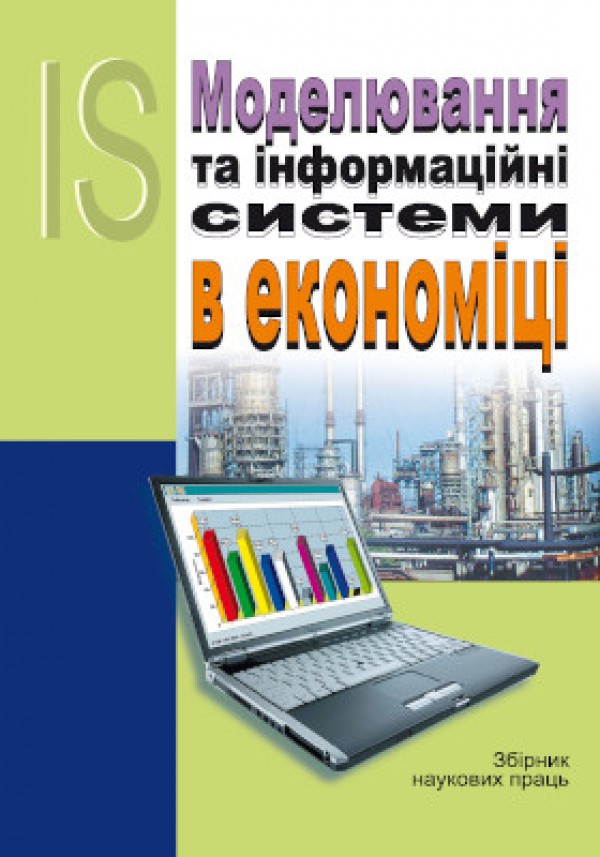
Modeling and Information System in Economics
ISSN 2708-9746
Варіації екосиcтем синергетичного розвитку ключових інноваційних економічних агентів
Variations of ecosystems for key innovative economic agents synergistic development
DOI:
10.33111/mise.101.7
Анотація: Перехід економіки на інноваційний шлях — це не тільки об’єктивно необхідний етап її розвитку, а й новий якісний стан, що передбачає кардинальні зміни в структурі економіки України й в повній мірі сприятиме реалізації інноваційного потенціалу. Стрижнем інноваційного розвитку в сучасному світі стає інтелектуалізація економічних систем, фактором же нерівномірності і одночасно розвитку, в сучасному розумінні, тобто розвитку інноваційного є інтелектуальний капітал, що продукує інноваційний спалах, який за відповідного працюючого механізму перетворюється в рушій розвитку. Основою розв’язання проблеми ресурсного забезпечення розвитку економічних агентів є об’єднання їх зусиль і можливостей у спільному інноваційному перетворенні — синергетичній еволюції. Постає потреба аналізу можливих напрямків такого спільного розвитку інноваційних економічних агентів у їх сукупності. Одним із векторів розвитку синергії економічних агентів автори вважають технологію адитивного виробництва. Метою статті є розробка теоретико-методологічної бази реалізації синергетичного розвитку, інноваційної та інтелектуальної трансформації економічних агентів. В роботі розроблено програму стимулювання інвестиційного попиту, що включає актуалізовану на основі результатів проведеного дослідження модель венчурування та модель інноваційної екосистеми на базі інтелектуального капіталу університетів. В роботі одним із векторів розвитку синергії економічних агентів названо технологію адитивного виробництва (АМ), яка на думку ряду дослідників, стане основою наступної промислової революції, розширивши можливості звичайних виробничих систем за рахунок використання інтелектуального капіталу. Проблема пошуку варіацій екосистем і моделей синергетичного розвитку економічних агентів відкриває широке поле для подальших досліджень, а також, ставить питання формулювання практичних рекомендацій в даній площині.
Abstract: The transition of the economy to an innovative path is not only an objectively necessary stage of its development, but also a new qualitative state, which provides for radical changes in the structure of Ukraine’s economy and will fully contribute to the realization of innovation potential. The core of innovative development in the modern world is the intellectualization of economic systems, a factor of unevenness and at the same time development, in the modern sense, ie the development of innovation is intellectual capital, which produces an innovative flash, which with the appropriate working mechanism becomes the driving force. The basis for solving the problem of resource provision for the 67 development of economic agents is to combine their efforts and capabilities in a common innovative transformation — synergistic evolution. There is a need to analyze the possible directions of such joint development of innovative economic agents in their entirety. The authors consider the technology of additive production to be one of the vectors for the development of the synergy of economic agents. The purpose of the article is to develop a theoretical and methodological basis for the implementation of synergetic development, innovation and intellectual transformation of economic agents. The program of investment demand stimulation is developed in the work, which includes the updated model of venturing on the basis of the results of the conducted research and the model of innovative ecosystem on the basis of intellectual capital of universities. One of the vectors for the development of synergy of economic agents is the technology of additive production (AM), which, according to some researchers, will be the basis of the next industrial revolution, expanding the capabilities of conventional production systems through the use of intellectual capital. The problem of finding variations of ecosystems and models of synergetic development of economic agents opens a wide field for further research, as well as raises the ques
Ключові слова: синергетичний розвиток, інновації, цифрова трансформація економіки, інтелектуальний капітал
Key words: synergetic development, innovations, digital transformation of the economy, intellectual capital.
УДК: 338.1:334.7
UDC: 338.1:334.7
To cite paper
In APA style
Kaminsky, O., & Yereshko, Y. (2021). Variations of ecosystems for key innovative economic agents synergistic development. Modeling and Information System in Economics, 101, 65-81. http://doi.org/10.33111/mise.101.7
In MON style
Камінський О.Є., Єрешко Ю.О. Варіації екосиcтем синергетичного розвитку ключових інноваційних економічних агентів. Моделювання та інформаційні системи в економіці. 2021. № 101. С. 65-81. http://doi.org/10.33111/mise.101.7 (дата звернення: 11.04.2025).
With transliteration
Kaminsky, O., Yereshko, Y. (2021) Variatsii ekosyctem synerhetychnoho rozvytku kliuchovykh innovatsiinykh ekonomichnykh ahentiv [Variations of ecosystems for key innovative economic agents synergistic development]. Modeling and Information System in Economics, no. 101. pp. 65-81. http://doi.org/10.33111/mise.101.7 [in Ukrainian] (accessed 11 Apr 2025).
 # 101 / 2021
# 101 / 2021
Download Paper
104
Views
33
Downloads
0
Cited by
- Sen, A. (1987). Food and freedom. A world to make: Development in perspective, 769–781.
- Heritage.org. (2021). Economic Freedom Score. Ukraine. World. URL: https://www.heritage.org/index/pdf/2021/countries/2021_IndexofEcon omicFreedom-Ukraine.pdf (дата звернення: 20.07.2021).
- Єрешко Ю. О. П’ятивузлова синергія як оптимальна інноваційна модель. Економічний аналіз. 2021. Том. 31. №2. URL: https://www.econa. org.ua/index.php/econa/article/view/1925 (дата звернення: 20.07.2021).
- Єрешко, Ю. О., Лободзинська, Т. П. Особливості венчурного інвестування в Україні як причина гальмування інноваційно-інвестиційного розвитку. Формування ринкових відносин в Україні. 2014. № 11. 162 с.
- Rayna, T., & Striukova, L. (2014). The Impact of 3D Printing Technologies on Business Model Innovation. In P. Benghozi, D. Krob, A. Lonjon, & H. Panetto (Eds.), Digital Enterprise Design & Management (Vol. 261, pp. 119–132). Cham: Springer International Publishing.
- Walters, D. (2012). Competition, Collaboration, and Creating Value in the Value Chain. In H. Jodlbauer, J. Olhager, & R. J. Schonberger (Eds.), Modelling Value (pp. 3–36). Heidelberg: Physica-Verlag.

